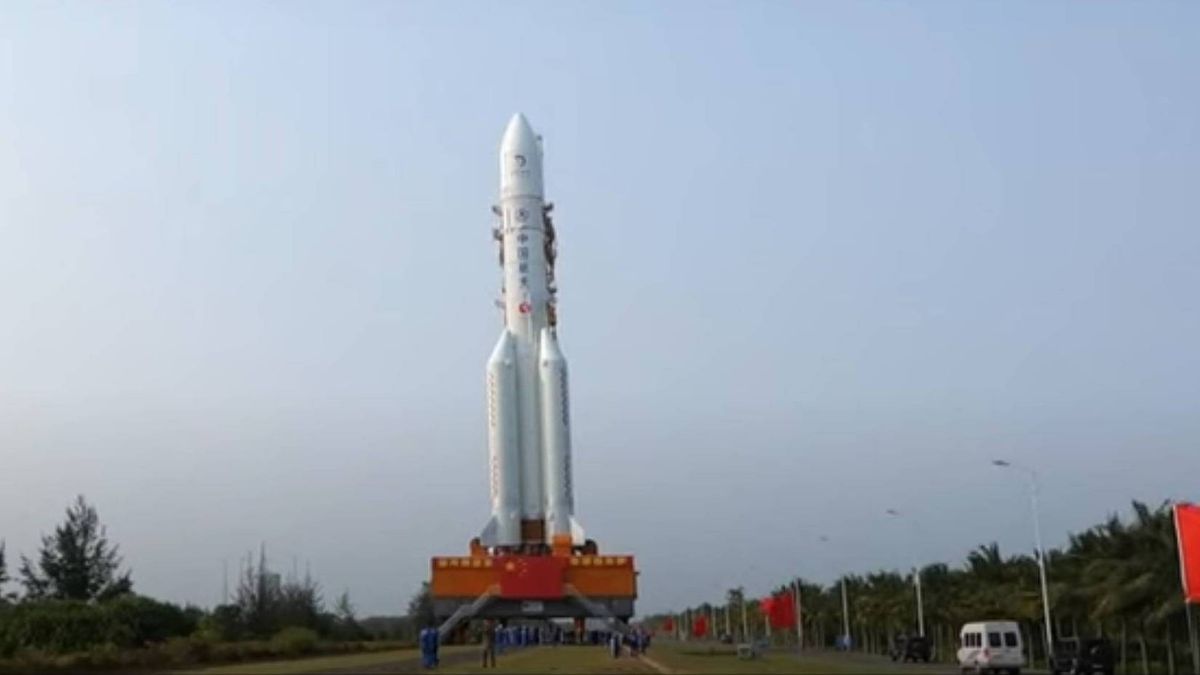Launch Preparations for China’s Upcoming Chang’e 6 Spacecraft Mission
The rapid preparation for China’s forthcoming spacecraft mission to the moon, the robotic Chang’e 6, is underway. The spacecraft now rests atop a Long March 5 rocket at its launching site in Wenchang, located in China’s Hainan province. The anticipated launch for Chang’e 6 is set for Friday, May 3, at 3:50 a.m. EDT (0759 GMT; 3:50 p.m. Beijing time).
Destination: The South Pole-Aitken Basin
The 8.2-metric-ton Chang’e 6 spacecraft aims to land in the South Pole-Aitken (SPA) Basin situated on the far side of the moon. This extensive mission comprises an orbiter, a lander, an ascender, and a reentry module.
Groundbreaking Lunar Endeavor
Chang’e 6 is poised to make history as it attempts to retrieve dust and rocks from the lunar far side for the very first time. If successful, these samples will be transferred to the ascender from the surface to lunar orbit. Subsequently, the collectibles will be transported to Earth via a reentry module.
Past expeditions by the United States, the former Soviet Union, and China have brought lunar samples back to Earth. However, all these materials were gathered from the near side of the moon, the side that always faces Earth.
China previously accomplished the first-ever soft landing on the lunar far side with its Chang’e 4 lander-rover mission in early January 2019.
New Horizons and Insights
Xingguo Zeng, an expert from the Laboratory of Lunar and Deep Space Exploration at the National Astronomical Observatories, revealed that Chang’e 6 is specifically designed to explore the numerous dichotomies between the lunar near and far sides. The mission aims to provide fresh perspectives on the early impact history of the solar system and the geological evolution of the moon.
According to recent statements by Xingguo published in Nature, Chang’e 6 is planned to touch down in the southern region of the Apollo basin, offering access to a variety of SPA materials.
Technological Breakthroughs
Ge Ping, the deputy director of the Center of Lunar Exploration and Space Engineering for the China National Space Administration, highlighted pivotal aspects of the Chang’e 6 mission including design and control technology, intelligent sampling, takeoff and ascent mechanisms, and automatic sample-return processes on the far side of the moon.
Preparations for the launch of Chang’e 6 are proceeding smoothly with the Long March 5 carrier rocket and the Chang’e 6 probe in excellent condition.
Liao Guorui, an engineer from the Wenchang Spacecraft Launch Site, emphasized that all necessary arrangements have been made to accommodate the environmental conditions, which include high temperatures, humidity, and salt mist in Hainan.
Launch Strategies and Challenges
The launch window for the Chang’e 6 mission presents unique challenges due to the lunar orbit. Zhu Haiyang from the China Academy of Launch Vehicle Technology underscored the necessity for precise timing and orbits to achieve optimal energy.
Zhu further explained that the mission requires a narrow launch window because of the specific requirements for the rocket’s launch time and delivery to the Lunar Transfer Orbit (LTO). The operation involves verification of technology concerning the ‘narrow window and multi-orbit’ approach.
For the Chang’e 6 launch, a strategy involving 10 lunar orbits for the rocket has been devised. Specific parameters for orbit entry accuracy have been set to ensure successful delivery to the LTO transfer point.
Scientific Endeavors and Future Prospects
James Head, a renowned lunar scientist at Brown University, noted that the Chang’e 6 mission closely mirrors the operational approach of the Chang’e 5 mission. The upcoming mission will aim to gather scoop and drill samples, potentially totaling up to 4.4 pounds (2 kilograms).
The recently deployed Queqiao 2 far side communications satellite is currently operational in lunar orbit, poised to support not only the Chang’e 6 mission but also future missions such as Chang’e 7 and Chang’e 8. These robotic expeditions will contribute to the establishment of the International Lunar Research Station (ILRS), envisioned as a moon base for scientific research purposes.
Image/Photo credit: source url





